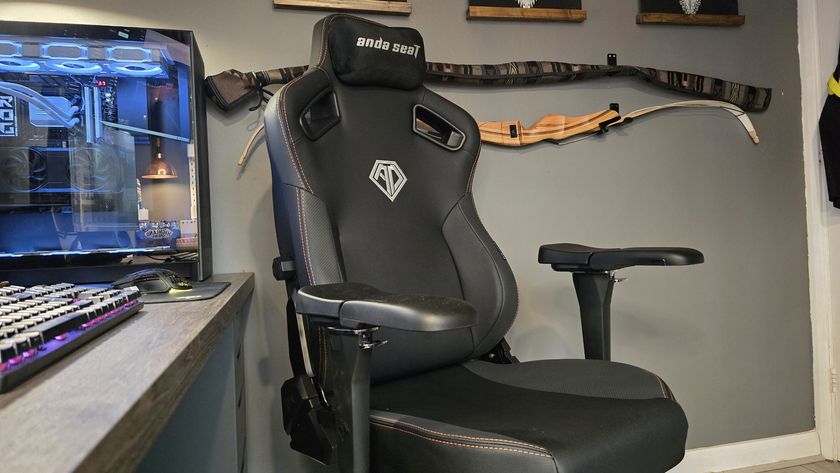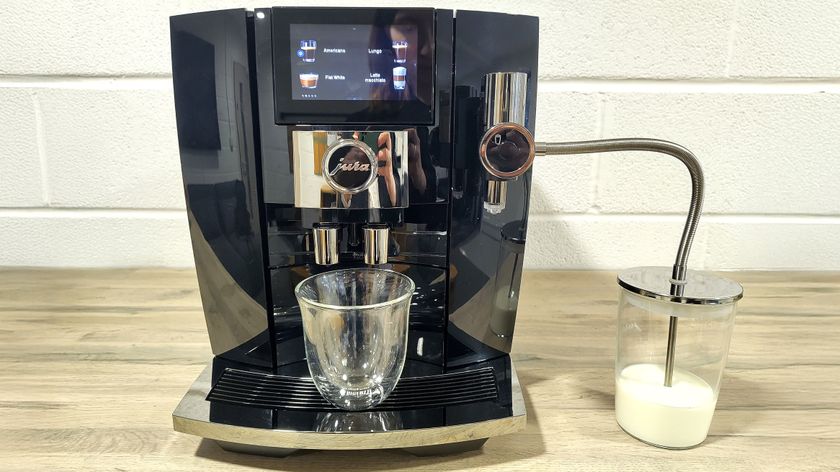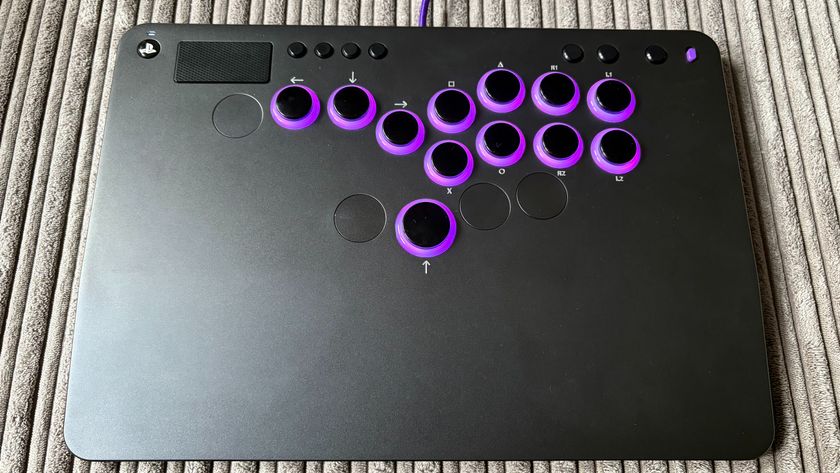TechRadar Verdict
The Asus RT-AX86U provides great Wi-Fi 6 performance, with many features that will appeal to hard-core gamers. However, it’s versatile enough to appeal to other users too, offering good range and signal strength, and an impressive set of security features and parental controls.
Pros
- +
Fast Wi-Fi 6 performance
- +
Strong gaming features
- +
Good parental controls
- +
Good wired connectivity
Cons
- -
It’s not cheap
Why you can trust TechRadar
Two-minute review
The new Asus RT-AX86U is an attempt to provide a high-performance router suitable for gaming and other demanding tasks at a more mainstream price.
Asus already has a range of specialist routers, called Rapture, that are designed purely for gaming. The Rapture routers are super-fast, but they’re also big, bulky and expensive, which makes the Asus RT-AX86U a compelling offering.
It’s still not cheap, costing £229.99 ($249.99; AU$536.00), but that’s actually a competitive price for a high-performance dual-band router that supports the latest Wi-Fi 6 technology. There’s also a top-of-the range model, called the Asus RT-AX88U, which is even faster, and packed with additional ports for wired connections, but that costs over £350 (around $460/AU$640).
Design and features

The matte-black Asus RT-AX86U is more compact than many gaming routers, measuring just 242mm wide and 100mm deep. However, its upright design and the three large antennae that stick straight up from the top panel mean that it stands a full 320mm high, so you’ll need a fair bit of space if you want to give those antennae room to breathe (and there’s a sneaky fourth antenna hidden inside the router as well).
It’s a dual-band router, supporting Wi-Fi 6 - aka 802.11ax - on the 2.4GHz and 5.0GHz bands, with a top speed of 5700Mbps, which should be more than fast enough to handle gaming, video and music streaming on most home broadband services. As well as providing really high speed, Wi-Fi 6 also uses new technologies such as OFDMA (orthogonal frequency division multiple access) to improve reliability when transmitting data to lots of devices all at the same time.
Your computers and mobile devices will also need to support Wi-Fi 6 to get the full benefit of those advanced features, but Wi-Fi 6 routers are still compatible with existing devices that use 802.11ac Wi-Fi as well, so you don’t need to worry about compatibility problems when buying a new Wi-Fi 6 router such as this.
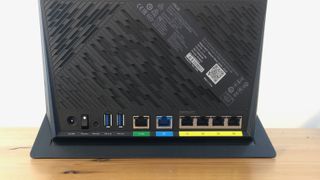
The Asus RT-AX86U is future-proof too, as it includes two WAN ports for Internet connections - a standard Gigabit Ethernet port, and a faster 2.5 Gigabit port as well (for high-speed connections that most UK homes can only dream of…). There are also four additional Gigabit Ethernet ports for devices that need a wired connection, and two USB 3.2 ports for connecting USB storage devices that can be shared on your home network.
Like many routers, the Asus RT-AX86U has a ‘quality of service’ (QoS) feature in its mobile app, which can prioritise performance for specific tasks, such as gaming or streaming video.
However, the router itself also assigns one of its Ethernet ports to be a dedicated ‘gaming port’ and automatically gives priority to any device that has a wired connection to that port.

The app also has a Mobile Gaming mode that can give priority to up to four mobile devices for gaming via Wi-Fi. And, if you’re brave enough to delve into the router’s web browser interface, there’s a special GeForce Now option that Asus has developed in conjunction with Nvidia.
This is designed to improve performance when using streaming games services such as Nvidia's GeForce Now game streaming service, and it gives ‘hyper-prioritisation’ to selected devices, allocating up to 90% of the router’s available bandwidth in order to provide the best gaming performance possible.
Set-up and performance

It’s not all about gaming though. The Asus app also includes plenty of other useful features, including a simple set-up process that starts by giving you the option of creating a single network that combines the 2.4GHz and 5.0GHz bands, or splitting the two bands into separate networks with different passwords.
More advanced users also have the option of fine-tuning their network set-up by using a web browser interface on a Mac or PC, rather than using the simpler Asus app for iOS or Android.

There’s malware protection provided by Trend Micro, and a good selection of parental controls, including content filters for unsuitable material, and a scheduling option to restrict Internet access to specific times. These security features and parental controls are better than those offered by some of Asus’ router rivals, and we’re glad to see that Asus doesn’t try to charge extra subscription fees for these features either.
The Asus RT-AX86U doesn’t disappoint when it comes to performance either. It was able to push our 50Mbps Internet connection to the limit, actually squeezing a little extra speed out of it to hit 59.3Mbps for devices in the same room as our main broadband router.
We also have an office at the back of the building that suffers from very poor Wi-Fi reception, but the RT-AX86U didn’t struggle at all there, holding steady at a healthy 58.9Mbps. That makes the Asus RT-AX86U a good all-round Wi-Fi upgrade offering good range and coverage, as well as high speeds for gaming, video and other demanding online tasks.

Buy it if…
You’re a serious gamer
The RT-AX86U is packed with useful features for gamers, including a dedicated ‘gaming port’ for PCs or consoles that need a wired connection, and a special mobile mode designed for mobile devices that use wi-fi. It’s even got an eye on the future of gaming with its GeForce Now mode for streaming services.
Your house is full of gadgets
Wi-Fi 6 is designed to be super-fast, but it also focuses on providing reliable wi-fi to lots of different devices all at the same time. It’ll be great for homes where tablets, smartphones, computers and consoles are all competing for a slice of your wi-fi bandwidth. It provides good range for the wi-fi signal too.
You’ve got kids
Some router manufacturers focus on speed, and overlook important features such as security and parental controls. However, the Asus app makes it easy to create profiles for individual children, so that you can monitor their Internet use, and use content filters to keep them safe online.
Don’t buy it if…
You’re on a budget
The RT-AX86U is competitively priced for a high-speed Wi-Fi 6 router, but there are plenty of less expensive routers that can provide very good performance while still using the current-generation 802.11ac version of Wi-Fi.
You’re not into gaming
A lot of the features built into the RT-AX86U are focused on gaming, such as its ability to use a super-fast 2.5 Gigabit broadband connection, or prioritise streaming services like GeForce Now. If you’re not spending all your evenings on Twitch then you probably don’t need an expensive router such as this.
You’ve got plenty of room to swing a cat
The RT-AX86U provided good Wi-Fi coverage for our modest home and office, but some larger homes may need more than just a single conventional router. If your home is a sprawling mansion, or split across upper and lower floors, then you might benefit from a mesh networking system that lets extend your wi-fi by placing two or more routers in different rooms.
- These are the best routers of 2020
Cliff Joseph is a former Editor of MacUser magazine, and a freelance technology writer with 30 year’s experience in the industry (and old enough to remember when Apple was close to going bust…).
His first job involved using Macs for magazine sub-editing and typesetting, which led to the realisation that these computer-thingies might actually turn out to be useful after all. After a few years specialising in the Mac side of the market, he went freelance and embraced the wide world of digital technology, including Windows PCs, digital audio and hi-fi, and networking. Somewhere along the line he also developed a bit of a gaming habit and has stubbornly waved the flag for Mac gaming for far too many years.
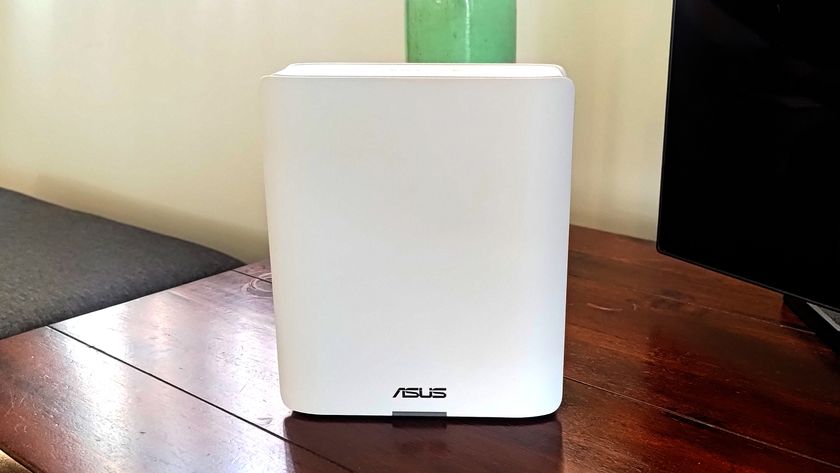
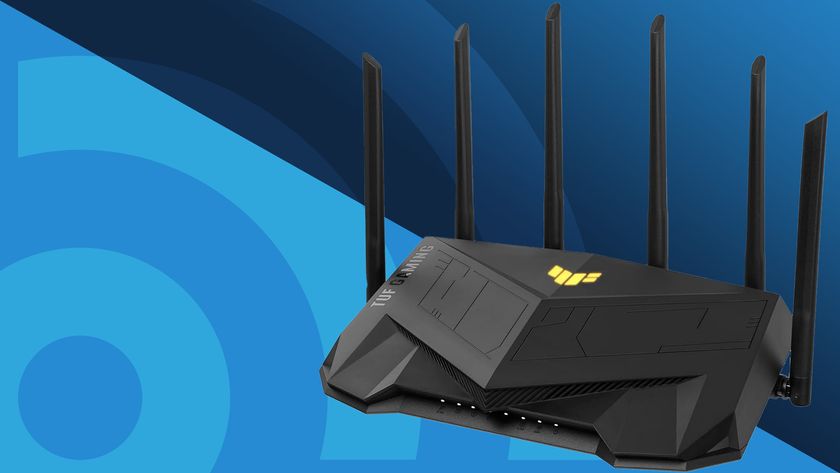
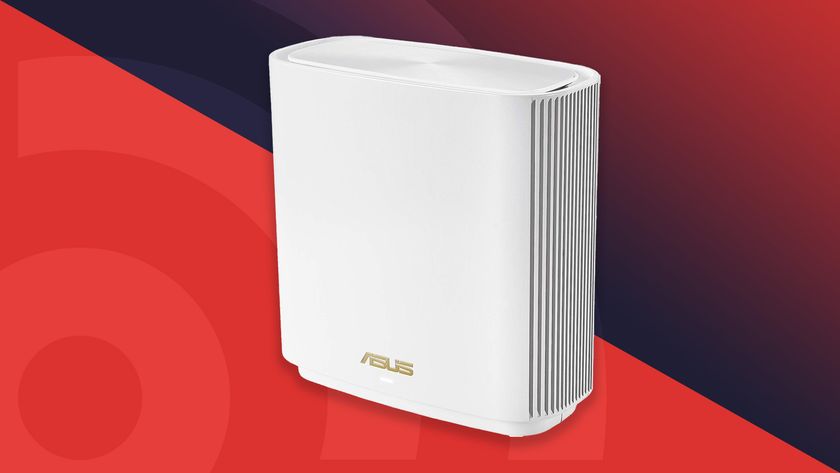
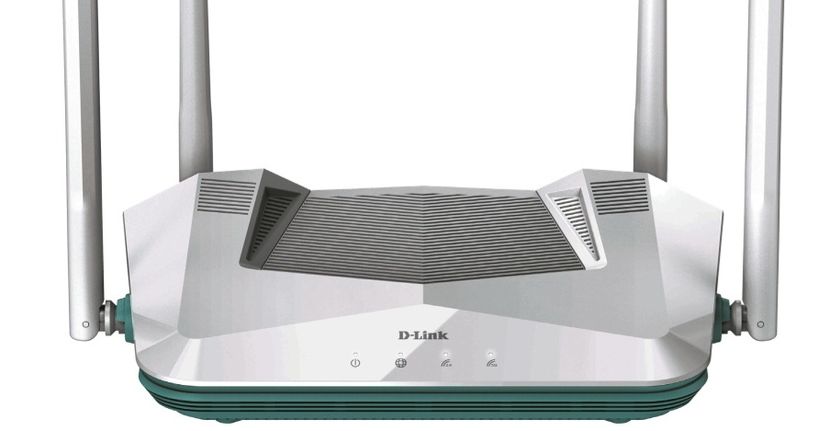

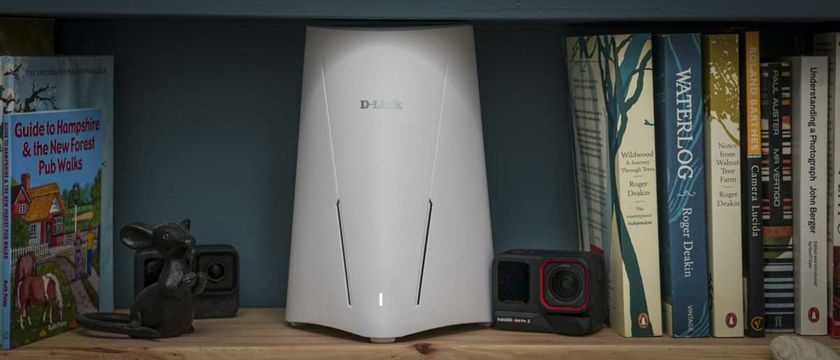


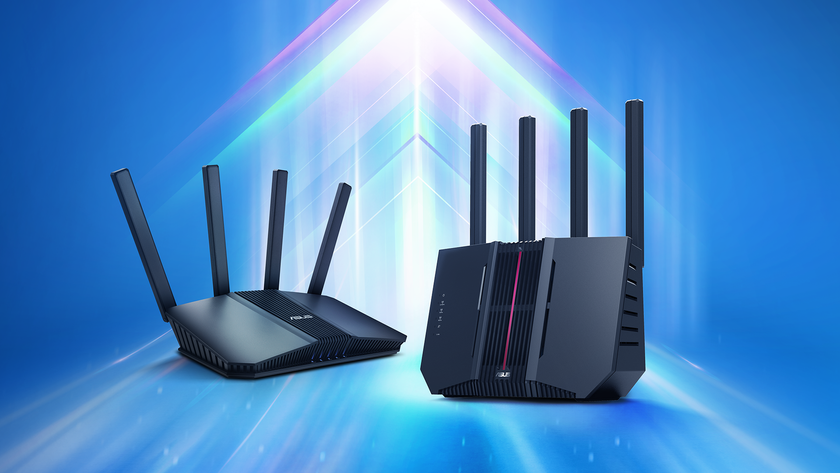
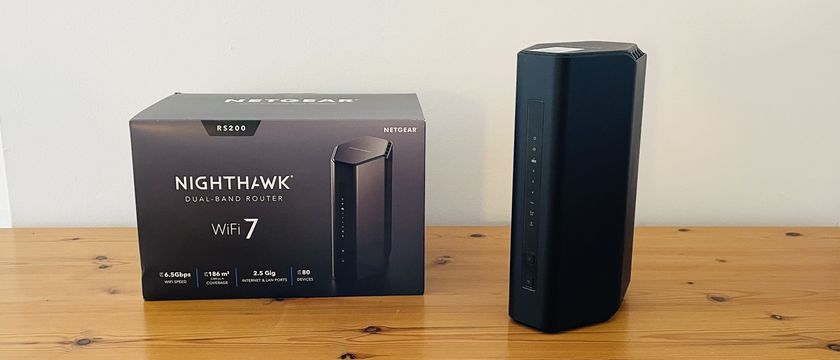




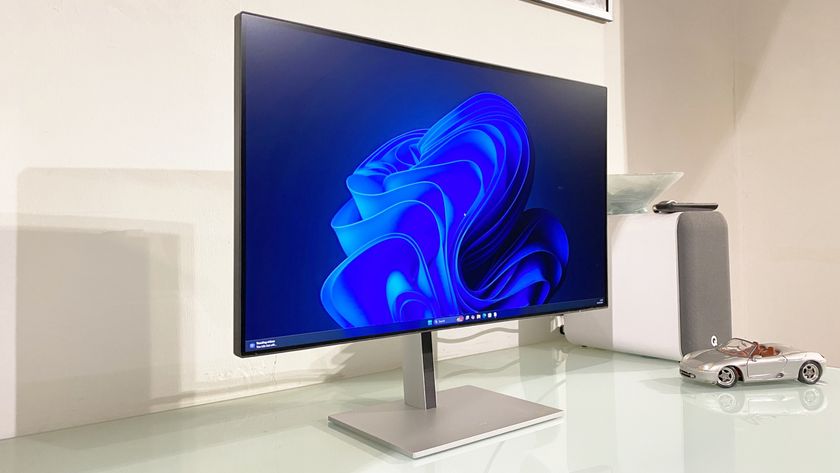
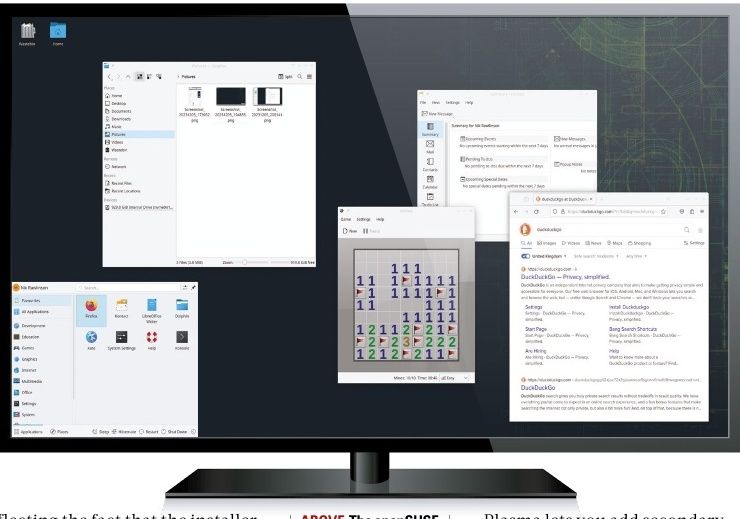
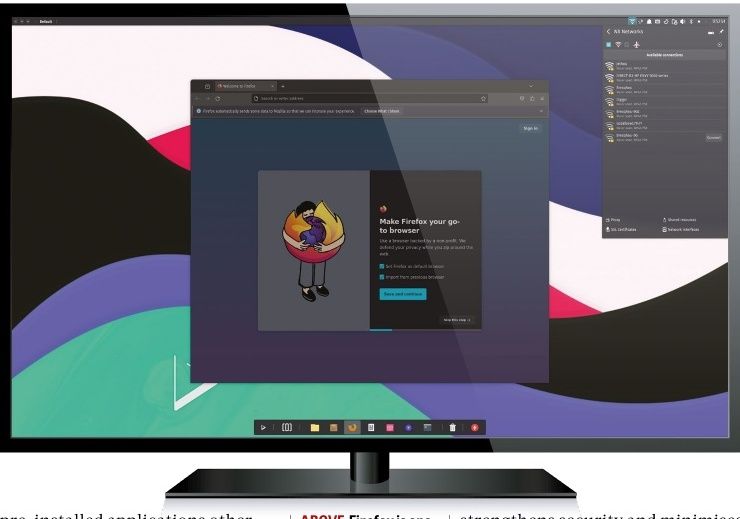
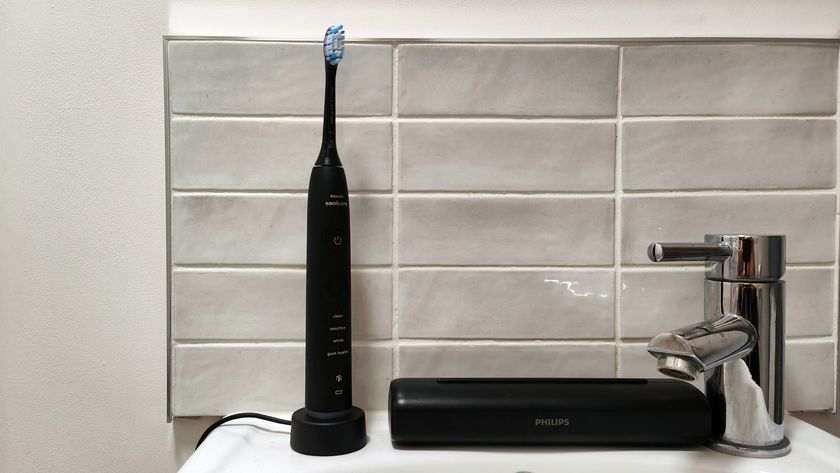

Netflix tried to fix 80s sitcom A Different World with AI but it gave us a different nightmare

Race to launch most powerful AI mini PC ever heats up as GMKTec confirms Ryzen AI Max+ 395 product for May 2025

Which affordable phone wins the mid-range race: the iPhone 16e, Nothing 3a, or Samsung Galaxy A56? Our latest podcast tells all



